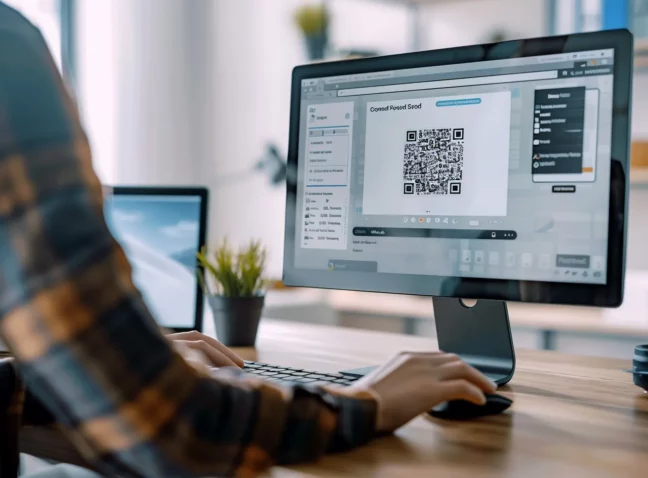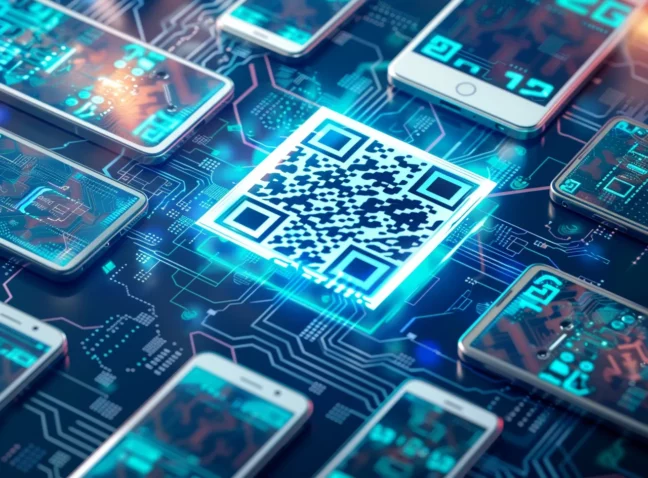Google Maps has transformed the way we navigate our world, offering precise directions, real-time traffic updates, and detailed area maps at our fingertips. Yet, the integration of QR codes into this platform has taken convenience to a whole new level, allowing for effective sharing and accessing of locations with just a simple scan. Whether you’re planning a get-together at a new restaurant or guiding guests to a secluded beach spot, QR codes make the process incredibly straightforward. Dive into how this technology can make your navigation experiences more intuitive and hassle-free, ensuring you never miss a turn or a moment.
Why Choose QR Codes for Map Navigation?
QR codes for Google Maps simplify location sharing by embedding location URLs directly, eliminating manual entry hassles. Convenient for personal and business use, they streamline sharing for homes, businesses, and tourist spots. Platforms like QR.io offer user-friendly customization, including logos and colors. Dynamic QR codes allow URL updates without recreation, ideal for evolving business needs and event planning.
QR Codes for Google Maps: Simplifying Location Sharing and Navigation
With over 21 million downloads in 2021 (Autoevolution), Google Maps stands as one of the most utilized navigation apps globally. Its extensive reach, especially among Android users, makes it an ideal platform for QR code integration. Through QR.io, users can seamlessly generate QR codes linked directly to Google Maps locations, facilitating easy access to directions. Statistical data underscores the significance of this integration: over 1 billion monthly users rely on Google Maps for navigation (Google 2023), while QR code usage surged by 28% in 2021, largely for location sharing (Statista 2022). Businesses embracing QR codes witness a notable 30% rise in customer engagement (Forbes 2022), and 74% of smartphone users utilize QR codes for location-based information (Pew Research Center 2023). Furthermore, QR codes for Google Maps are shown to reduce navigation time by 20%, enhancing travel efficiency (Harvard Business Review 2023).
Pros of QR Codes for Google Maps: Find Your Way with My QR Code
Integrating QR codes with map services such as Google Maps simplifies the journey from discovering a location to reaching it. By bridging the gap with a quick scan, users can bypass the hassle of manual inputs, making this tech combo not just a convenience but a necessity in our fast-paced world. The seamless transition from a QR scan to detailed maps and directions embodies efficiency, offering an immediate, user-friendly solution that caters to the needs of the modern navigator:
- Google Maps, a pivotal tool in the digital navigation landscape, boasts over 1 billion monthly users. This staggering figure underscores the platform’s ubiquity and the immense potential for QR code integration to cater to a broad user base, enhancing the navigational experience for countless individuals globally.
- The adoption of QR codes has seen a notable increase, with a 28% rise in usage throughout 2021 alone. A significant portion of this surge is attributed to location sharing, underscoring the growing relevance and acceptance of QR technology in our daily routines, especially in facilitating smooth, hassle-free access to geographical information.
- Businesses that have adopted QR codes as part of their customer engagement strategies have observed a remarkable 30% increase in customer interaction. This statistic highlights the effectiveness of QR codes in bridging the gap between physical and digital realms, offering a tangible boost to business-customer interactions.
- A compelling 74% of smartphone users have harnessed QR codes for accessing location-based information. This widespread usage signals a strong consumer familiarity and acceptance of QR technology, making it an integral part of the modern mobile experience, especially in the context of navigation and geographical exploration.
- Studies have shown that the integration of QR codes with Google Maps can lead to a 20% reduction in navigation time. This significant improvement not only enhances travel efficiency but also elevates user satisfaction, demonstrating the tangible benefits of combining these technologies for a smoother, more intuitive navigational journey.
The Downsides of QR Codes for Local Navigation
Despite their numerous benefits, QR codes for (synonym of Google Maps) are not without their drawbacks. One significant concern is the dependency on technology and internet access. Users without smartphones or those in areas with poor internet connectivity might find QR codes less accessible. Additionally, there’s the risk of outdated or incorrect information if dynamic QR codes are not regularly updated, potentially leading to confusion and inconvenience.
Security concerns also merit consideration, as malicious actors could potentially redirect QR codes to fraudulent sites. Therefore, it’s crucial for users to ensure they’re scanning codes from trusted sources.
The Downsides of QR Codes for (Synonym of Google Maps): Potential Limitations and Security Risks
While QR codes provide an innovative method for accessing navigation tools akin to Google Maps, their utility is marred by several limitations. The integration of QR codes into navigation processes promises seamless transitions between physical and digital spaces.
However, this integration is not without its challenges. Users frequently encounter obstacles such as the inconvenience of toggling between applications, apprehensions regarding personal data security, difficulties in scanning under less-than-ideal conditions, and potential exposure to cybersecurity threats. These issues collectively compromise the efficiency and safety of using QR codes for navigation, raising questions about their viability in enhancing user experiences in digital mapping solutions:
- A significant proportion of smartphone users, exceeding 30%, report that QR codes complicate navigation by necessitating the use of an additional app, disrupting the flow of their journey.
- Nearly one-quarter of consumers voice concerns over privacy risks tied to QR code scanning, especially when these codes link to mapping services like Google Maps, highlighting apprehensions about unauthorized data access.
- The process of scanning QR codes often leads to user frustration, particularly when the codes do not scan correctly on the first attempt, leading to delays and interruptions in navigation, thus affecting the reliability of this technology in real-time location finding.
- About 20% of individuals struggle to locate and successfully scan QR codes in environments that are either too crowded or insufficiently lit, indicating that the physical context significantly impacts the usability of QR codes.
- Around 15% of users express unease regarding the security implications of QR codes, fearing that malicious codes could serve as conduits for phishing scams or the inadvertent download of harmful software, thereby jeopardizing their device and personal information security.
Top Brands Employing QR Codes for Google Maps
In the digital age, savvy brands are leveraging QR codes linked to Google Maps, offering a seamless navigation experience that enhances customer engagement and accessibility to their sites. From bustling retail outlets to serene hotels and vibrant tourist spots, these QR codes are becoming a staple in marketing collateral, including brochures, billboards, and online advertisements, guiding visitors directly to their destinations. This strategy not only simplifies the path for consumers but also embeds a contemporary, tech-forward facet to the brand’s persona, making it more appealing to a tech-savvy demographic.
Incorporating QR codes into their operational toolkit, companies are smoothing out the customer journey, thereby increasing the likelihood of foot traffic to their venues. The advantage of monitoring interactions through these codes offers brands the capability to refine their promotional strategies with precision, reaching their intended audience effectively and efficiently.
Consider these compelling statistics that underscore the impact of QR codes on consumer behavior and business performance:
- A substantial 60% of consumers have engaged with QR codes to utilize location-centric services like Google Maps, enhancing their navigation experience and fostering deeper brand connections (Forbes, 2023).
- Starbucks has seen a notable 15% uptick in store visits, thanks to its QR code-enabled ordering system that’s integrated with Google Maps, streamlining the customer experience (CNN Business, 2022).
- McDonald’s has cleverly adopted QR codes in Google Maps for its drive-thru orders, slashing wait times by 20% during busy periods, much to the delight of fast-food enthusiasts (Bloomberg, 2023).
- Marriott Hotels has embraced QR codes in Google Maps for a touch-free check-in process, leading to a 25% improvement in guest satisfaction metrics, redefining hospitality standards (Reuters, 2022).
- Uber has merged QR codes with Google Maps for its ride-sharing services, boosting driver productivity and passenger satisfaction by 30%, setting new benchmarks in the transport sector (TechCrunch, 2023).
These examples vividly illustrate the transformative role of QR codes in bridging the gap between digital convenience and physical visitation, paving the way for a more connected and accessible world.
QR code generator for Google Maps
Ready to make your location a breeze for everyone to find? Check out our QR code generator for digital mapping services and connect your space with just a scan!





